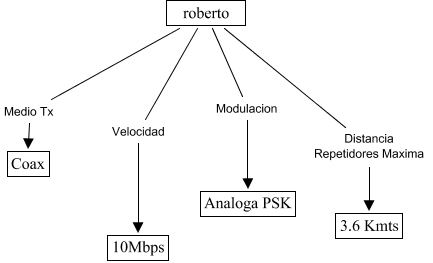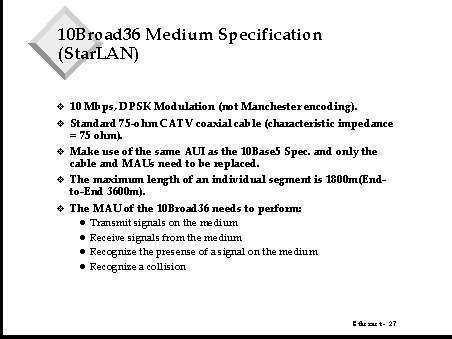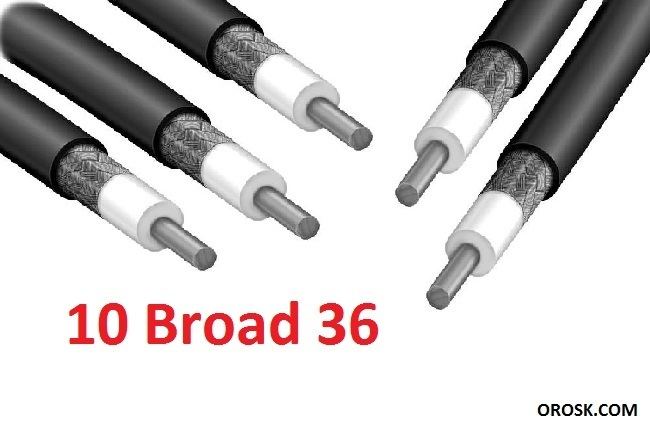 | ||
Halt and catch fire season 2 episode 6 10broad36 review
10BROAD36 is an obsolete computer network standard in the Ethernet family. It was developed during the 1980s and specified in IEEE 802.3b-1985.
The standard supported 10 Mbit/s Ethernet signals over standard 75 ohm cable television (CATV) cable over a 3600-meter range. The original Ethernet standard 10BASE5 used a baseband encoding (also known as line coding), where the signal is simply encoded directly on the wire without any sort of carrier wave. Instead, 10BROAD36 modulated its data onto a higher frequency carrier signal, much as an audio signal would modulate a carrier signal to be transmitted in a radio station. This was called broadband at the time; the term has a different (less meaningful) marketing meaning today. This provides several advantages over the more traditional baseband signal. Range was greatly extended, (3600 meters, versus 500 meters for 10BASE5) and multiple signals can be carried on the same cable. 10BROAD36 could even share a cable with standard television channels. The Institute of Electrical and Electronics Engineers standards committee IEEE 802 published the standard that was ratified in 1985 as an additional section 11 to the base Ethernet standard. It was also issued as ISO/IEC 8802-3 in 1989.
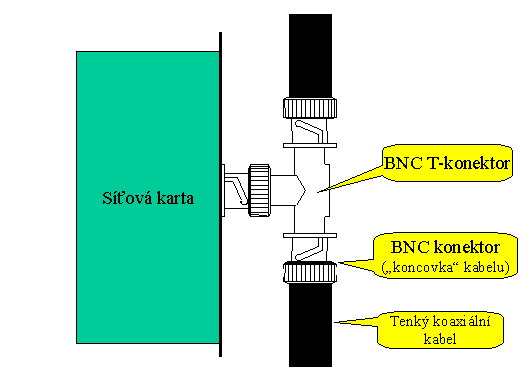
10BROAD36 was less successful than its contemporaries because of the high equipment complexity (and cost) associated with it. The individual stations were much more expensive due to the extra radio frequency circuitry involved; however the primary extra complexity came from the fact that 10BROAD36 was unidirectional. Signals could only travel one direction along the line, so head-end stations must be present on the line to repeat the signals (ensuring that no packets travel through the line indefinitely) on either another, backwards direction frequency on the same line, or another line entirely. This also increased latency and prevented bidirectional signal flow.
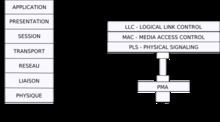
The extra complexity outweighed the advantage of reusability of CATV technology for the intended campus networks and metropolitan area networks. An installer at Boston University using the Ungermann-Bass product noted that no installers understood both the digital and analog aspects of the system. In wide area networks it was quickly replaced by fiber-optic communication alternatives, such as 100BASE-FX (which provided ten times the data rate). Interest in cable modems was revived for residential Internet access, through later technologies such as the Data Over Cable Service Interface Specification (DOCSIS) in the 1990s.
